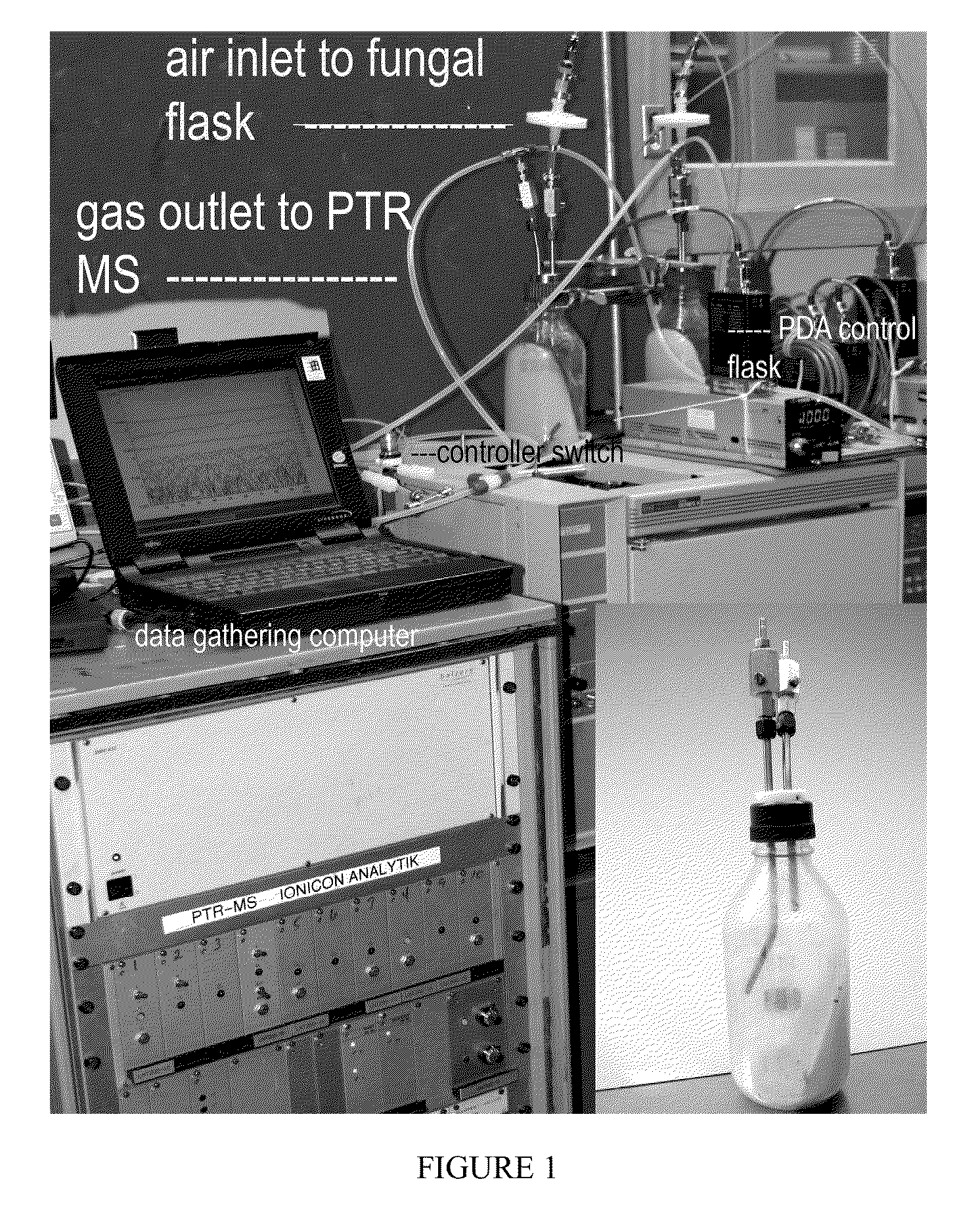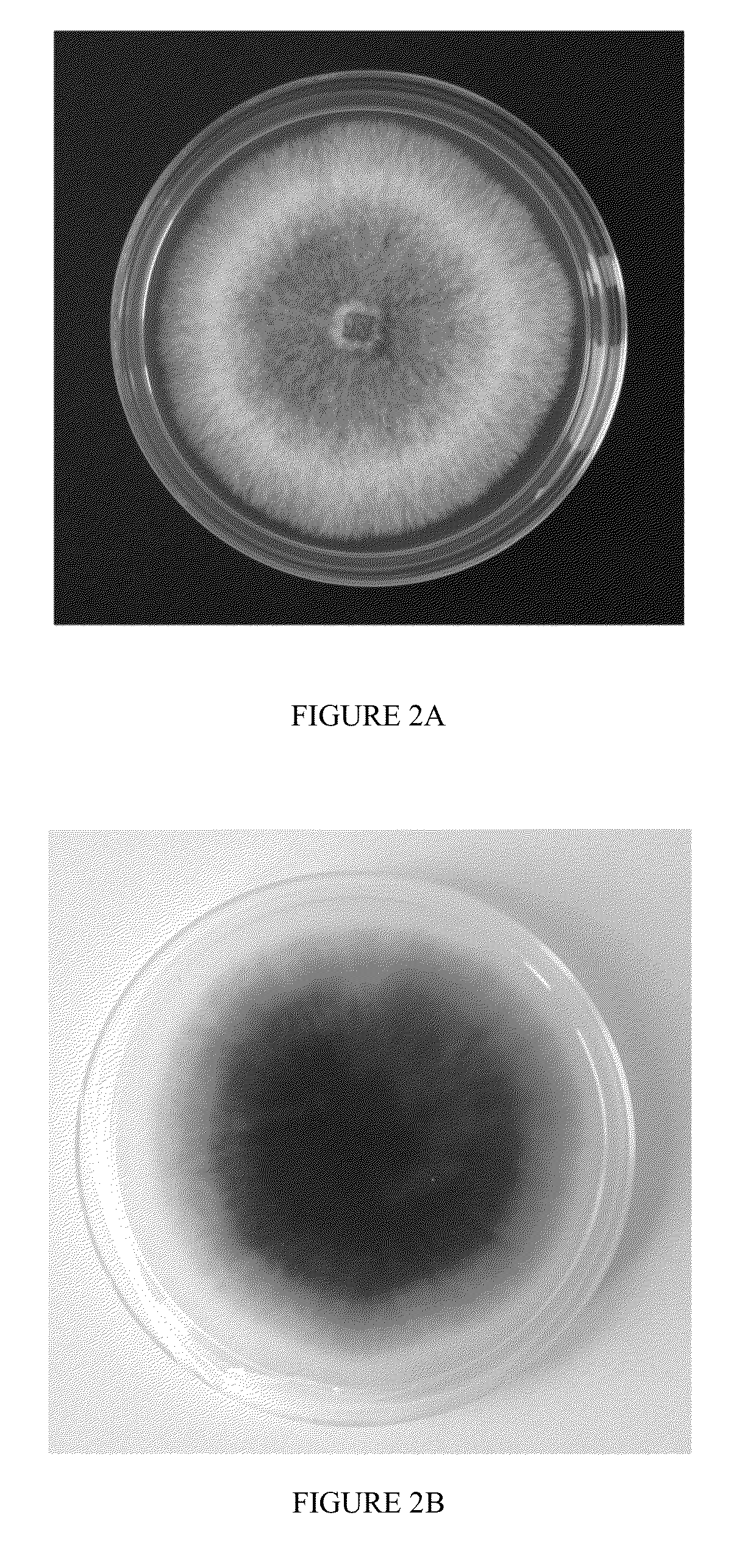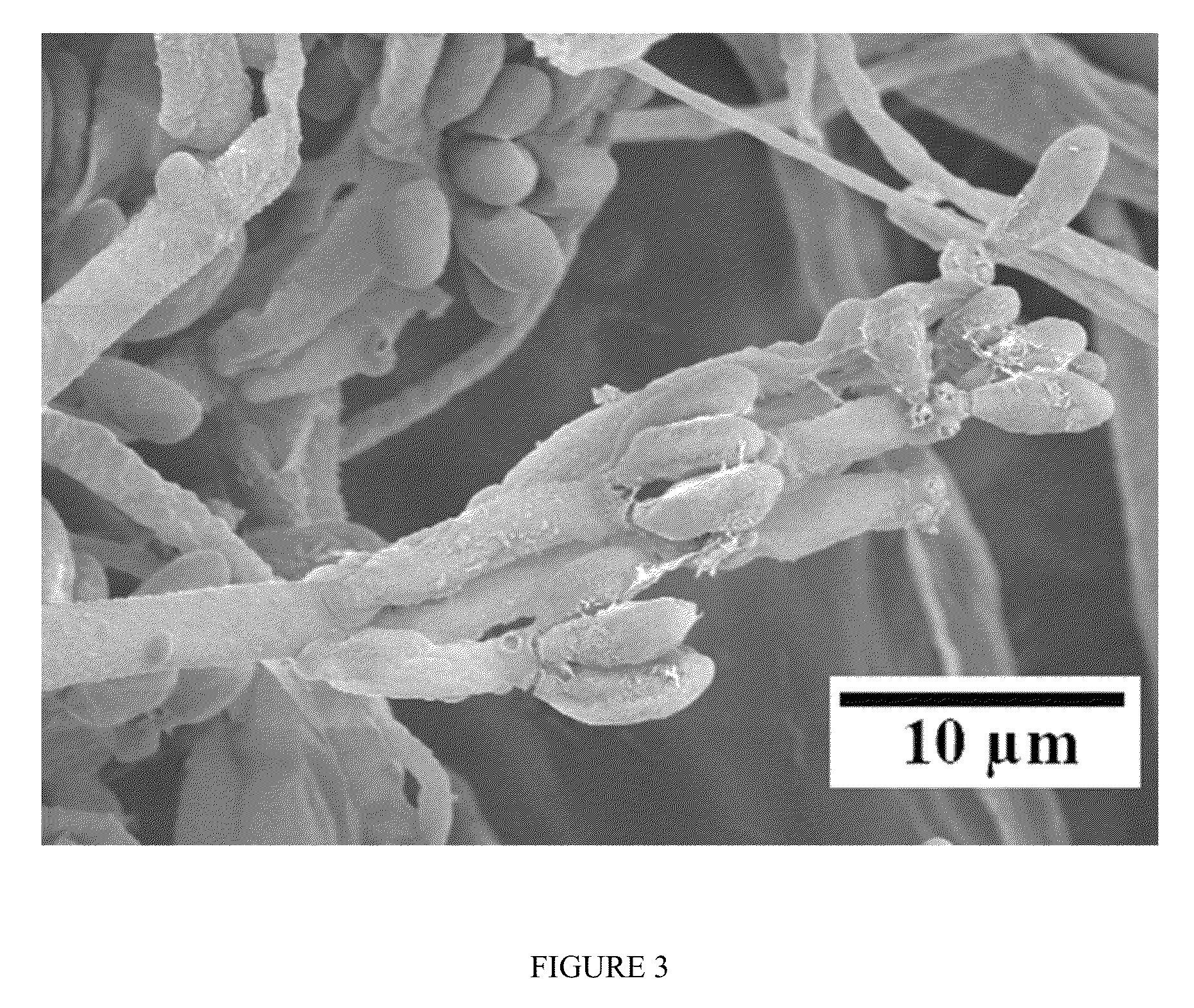Microorganisms for Producing Volatile Organic Compounds
a technology of volatile organic compounds and microorganisms, which is applied in the field of microorganisms for producing volatile organic compounds, can solve the problems of limiting the widespread industrial application of these volatile compounds, and achieve the effect of reducing the number of microorganisms
- Summary
- Abstract
- Description
- Claims
- Application Information
AI Technical Summary
Benefits of technology
Problems solved by technology
Method used
Image
Examples
experimental examples
[0085]The invention is now described with reference to the following Examples. These Examples are provided for the purpose of illustration only and the invention should in no way be construed as being limited to these Examples, but rather should be construed to encompass any and all variations which become evident as a result of the teaching provided herein.
[0086]Without further description, it is believed that one of ordinary skill in the art can, using the preceding description and the following illustrative examples, make and utilize the present invention and practice the claimed methods. The following working examples therefore, specifically point out the preferred embodiments of the present invention, and are not to be construed as limiting in any way any portion of the disclosure.
example 1
Hypoxylon sp, an Endophyte of Persea indica, Producing 1,8-Cineole and Other Bioactive Volatiles with Fuel Potential
Fungal Isolation and Storage
[0087]Endophytic fungal culture, CI-4A, was obtained as an endophyte from an evergreen tree (Persea indica), native to the Canary Islands. One small limb was excised from Persea indica found growing on the island of Tenerife, Spain, at N—28° 32′ 23″; W—16° 16′ 16″. Other plant species sampled from this same island included Acacia sp., Pinus canariensis, Prunus lusitanica and Rhamnus glandifolia, none of which fostered recovery of CI-4. Isolation procedures followed a previously described protocol (Worapong, et al., 2001, Cinnamomun zeylanicum. Mycotaxon 79:67-79; Ezra, et al., 2004, Microbiology 150:4023-4031). Briefly, external tissues were thoroughly exposed to 70% ethanol prior to excision of internal tissues which were cultured on standard Petri dishes of water agar and glycerol arginine medium (GAM). Endophytic fungi growing from the pl...
example 2
The Paleobiosphere: a Novel Device for the In Vivo Testing of Hydrocarbon Production Utilizing Microorganisms
[0106]Described herein is the construction and testing of a unique instrument, the Paleobiosphere, which mimics some of the conditions of the ancient earth. The instrument provides an experimental testing system for determining if certain microbes, when provided an adequate environment, can degrade biological materials to produce fuel-like hydrocarbons in a relatively short time frame that become trapped by the shale. The conditions selected for testing included a particulate Montana shale (serving as the “Trap Shale”), plant materials (leaves and stems of three extant species whose origins are in the late Cretaceous), a water-circulating system, sterile air, and a specially designed Carbotrap through which all air was passed as exhaust and volatile were hydrocarbons trapped. The fungus for initial testing was D-6, an Annulohypoxylon sp. isolated as an endophyte of Citrus aur...
PUM
 Login to View More
Login to View More Abstract
Description
Claims
Application Information
 Login to View More
Login to View More - R&D
- Intellectual Property
- Life Sciences
- Materials
- Tech Scout
- Unparalleled Data Quality
- Higher Quality Content
- 60% Fewer Hallucinations
Browse by: Latest US Patents, China's latest patents, Technical Efficacy Thesaurus, Application Domain, Technology Topic, Popular Technical Reports.
© 2025 PatSnap. All rights reserved.Legal|Privacy policy|Modern Slavery Act Transparency Statement|Sitemap|About US| Contact US: help@patsnap.com



